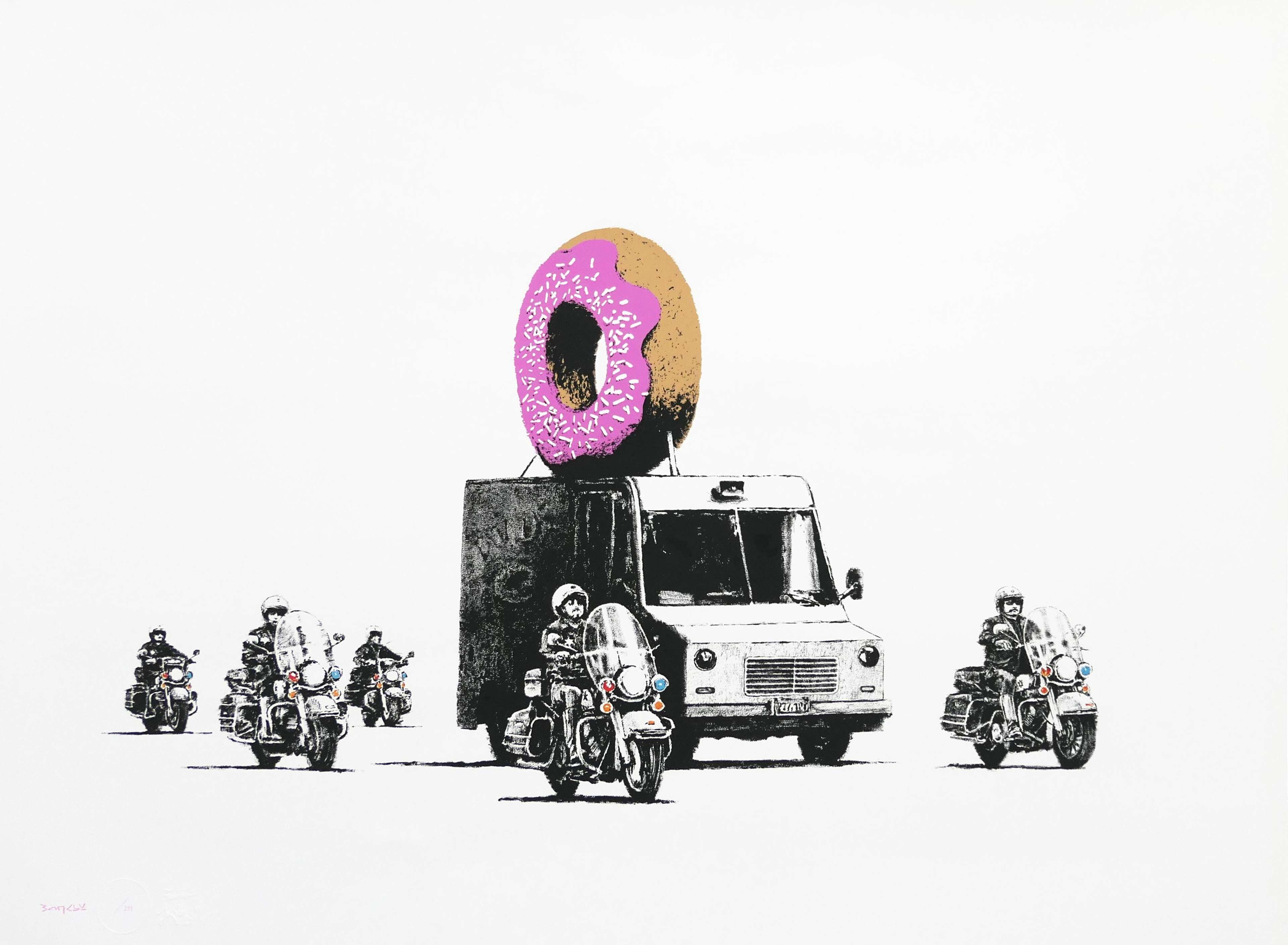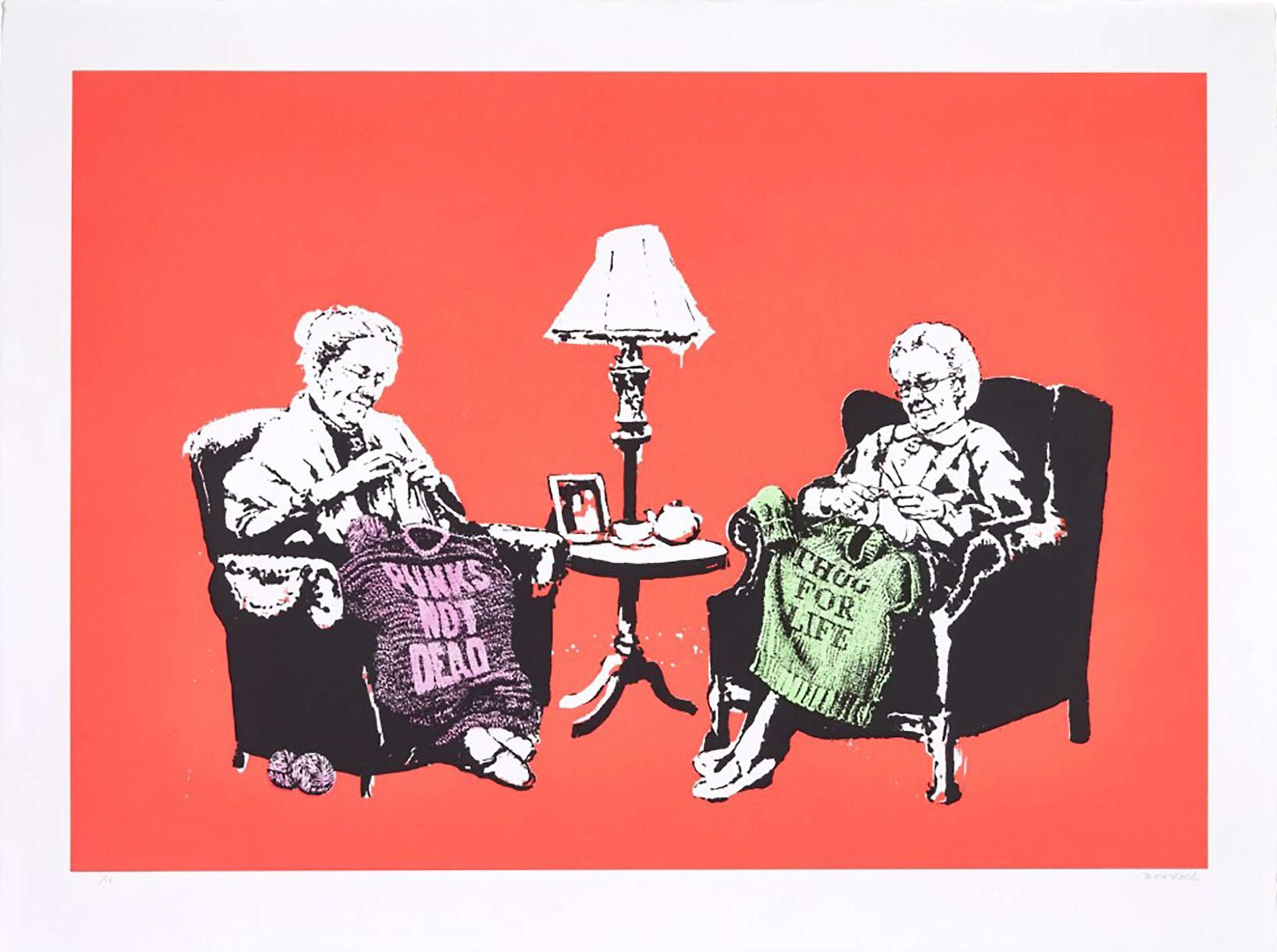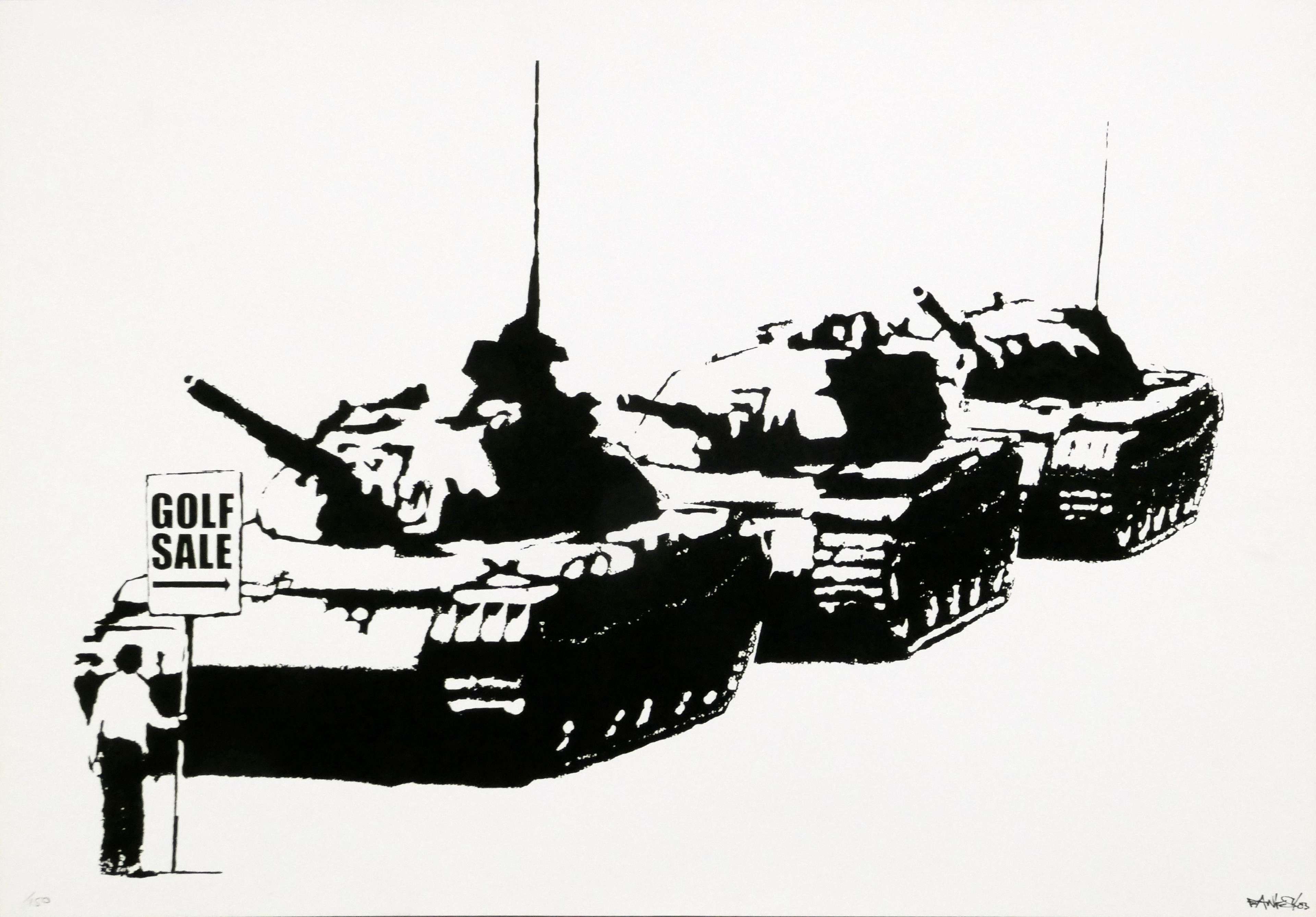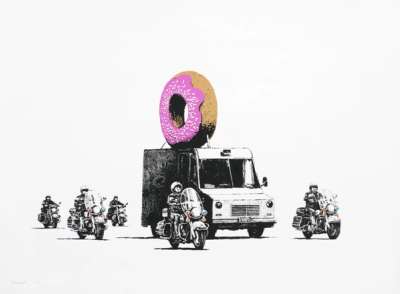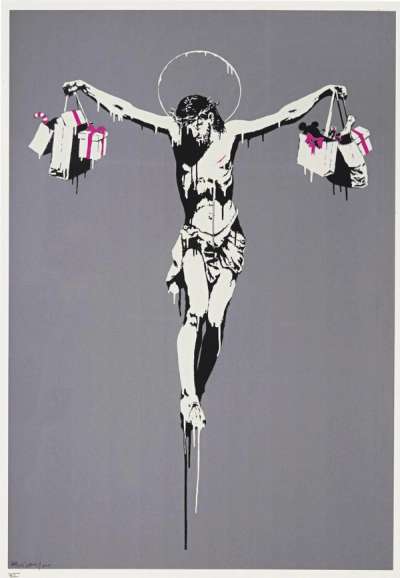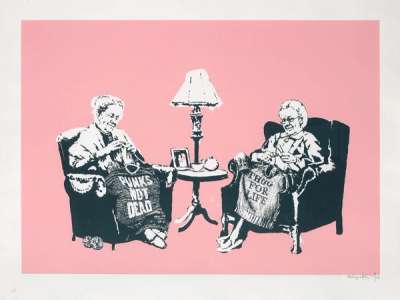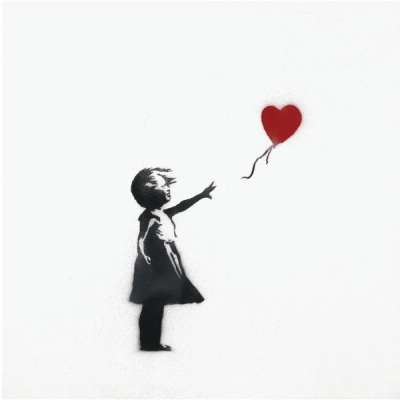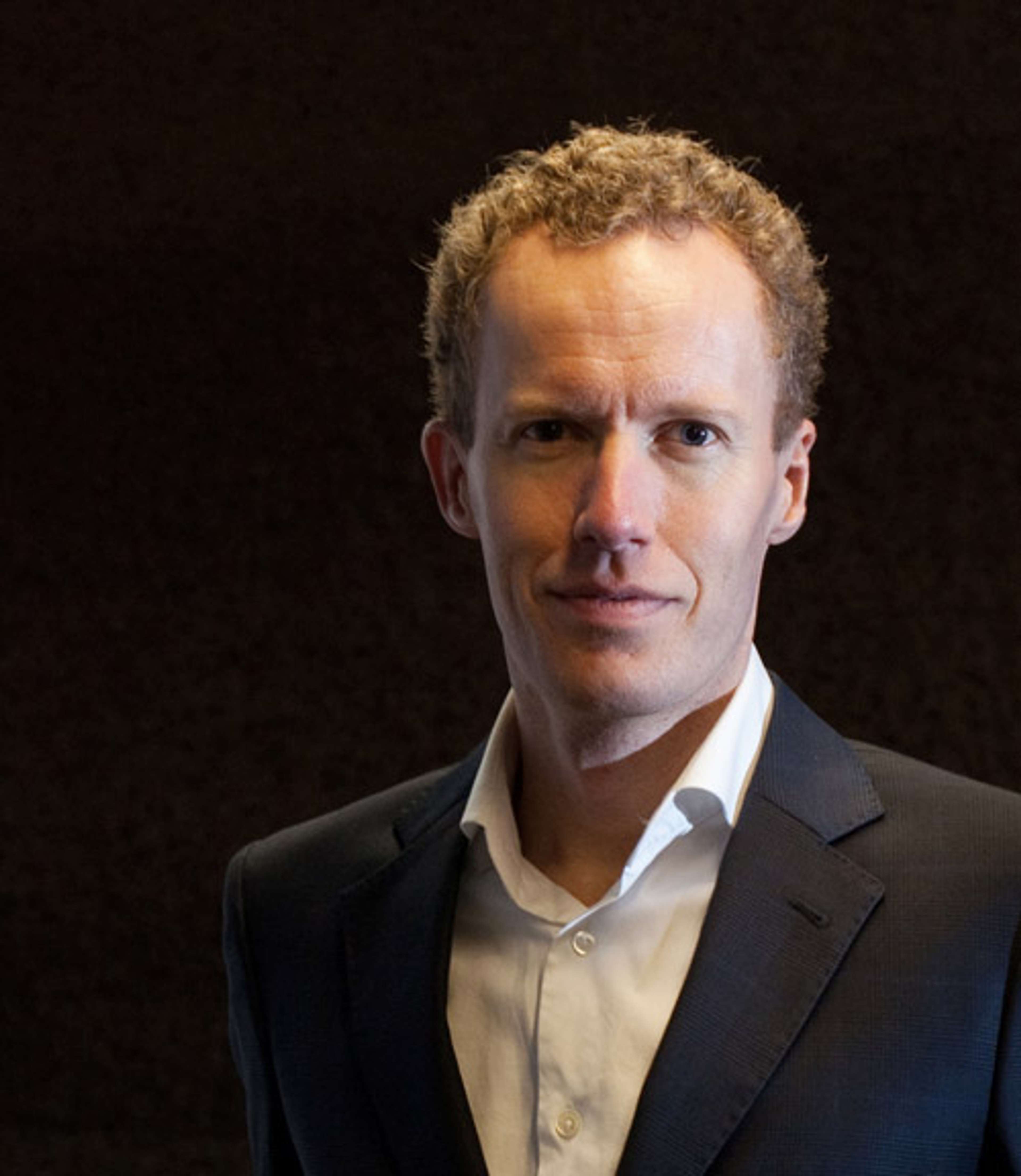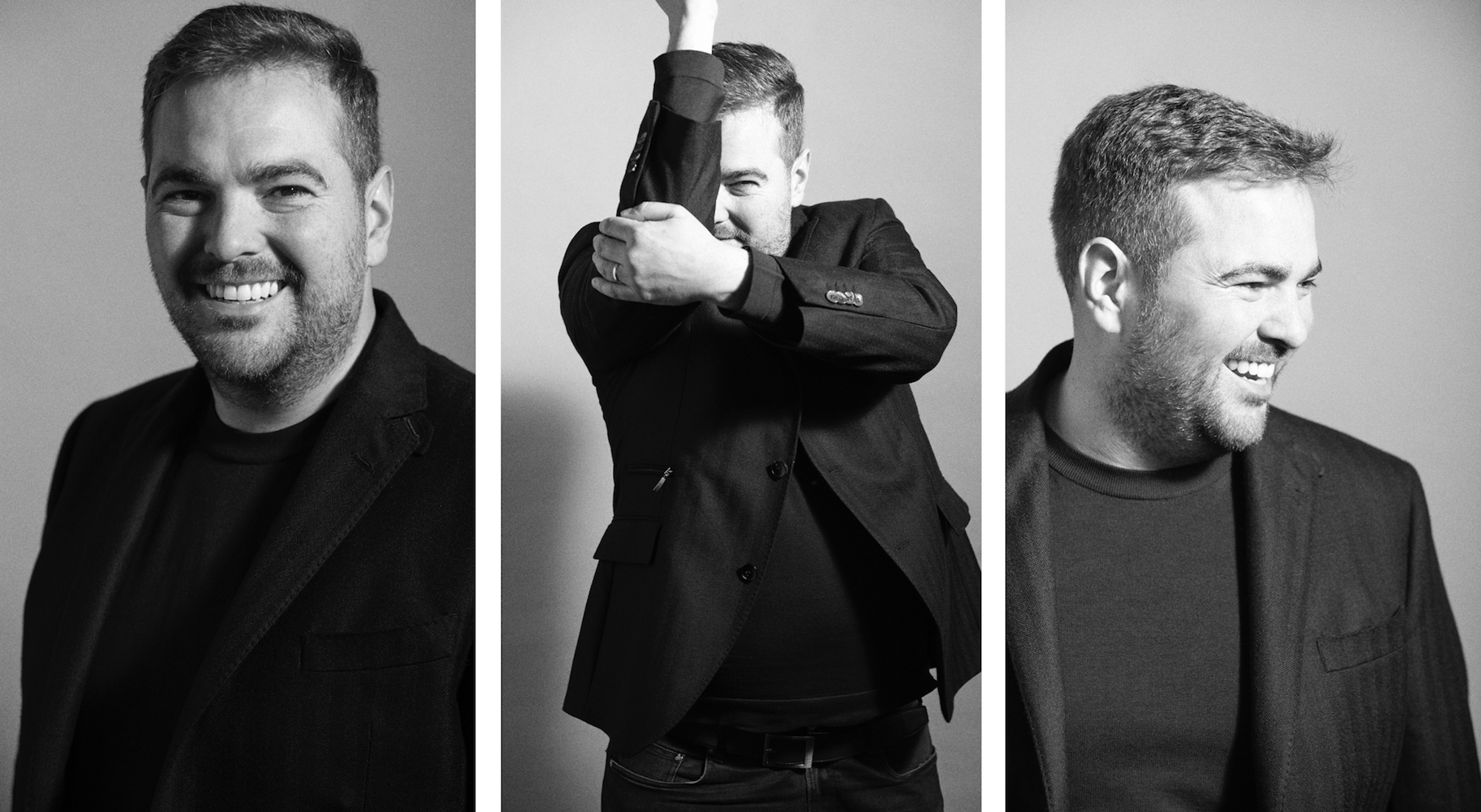
MyPortfolio
Here, in conversation with our Senior Editor Lucy Howie, he discusses the first Banksy he ever bought, and where collectors starting out might look to begin their own collection.
LH: Joe, you’ve been collecting, and working in the Banksy market for years now. When and why did you buy your first ever Banksy?
JS: I’d always been interested in Banksy’s work and the images growing up. Banksy was very much an underground artist in the early 2000s and was not known in the mainstream as he is now. We bought our first Banksy in 2009 and since then we’ve looked to add to our collection and grow it as much as possible.
This first print was a signed Grannies that we bought for £2,400. Another print we bought was Strawberry Donuts. We paid £2,700 for this at the time. Within about a week, there was a guy on eBay who offered £3,000 to buy it from us. At the time I thought, I can make £300 in the space of a week…that's amazing money! Obviously now, this print is worth £90,000.
LH: Where did you buy the Grannies print?
JS: We purchased the Grannies from a private client. It was bought framed and then we sold it to another client who had it de-framed. There were condition problems all over it once it was taken out of its frame and as a result, the client returned it to us. This actually taught us our biggest lesson in this market and since then, we’ve only dealt in unframed works. This helps to ensure that we can fully check the condition of the print before selling. When you see something in a frame it looks great, but it's only when you get it out of the frame, speak to a conservation specialist and get a full condition report, that you realise what state the print is in. This particular Grannies print had been both badly damaged and badly restored.
LH: What kind of conversations did you have when you were going to sell the Grannies? Did you ever think - should we keep this print a bit longer?
JS: We’re talking about 2009 here. MyArtBroker was in its very early days, and it wasn’t a case of us wanting to hold onto the print. We wanted to turn it over and move onto the next one - it was good profit back then.
LH: Was this what drew you to Banksy, so that you could buy a print and quickly make returns within a short period?
JS: I was a broker and dealer in the market at the time and the market wasn’t as active as it is today. People used to buy and sell on Ebay. When we started the business, we were looking at various markets that were active, and Banksy was one of the most interesting even back then, whilst it’s at a very different price point to where it is today.
LH: How would you say the market has changed in that time?
JS: The Banksy market had been increasing in value since 2010, by about 10-15% a year, and by 2015 the market really started jumping by about 20-30% year on year. There would be a huge increase in, not just pricing, but demand, whenever Banksy put on an exhibition or created a new work for the street. At the same time the development of e-commerce and technology was accelerating. Since 2010, people has become more comfortable with trading, buying and selling prints and editions online.
LH: Has the growth in the market taken you by surprise or was this what you expected?
JS: In the last few years it has definitely taken us by surprise with how much the market has grown. We always thought that in 2008/9 the market was going to be alive and kicking for the long term. But we truly didn’t realise the huge gains that would be made in such a short period of time – especially in 2020, when the market really shot up.
All of this really comes down to supply and demand. Banksy stopped producing prints for the public in 2010 and so demand is now huge. This means that prices are likely to carry on increasing and we’re still very confident about the long term market. Banksy is the modern day Warhol, there is no doubt about that.
LH: Yes, the demand for work by Banksy is almost unrivalled at the moment, and the market has shot up at an unprecedented rate in the last two years. Do you think this is partly due to the Covid-19 pandemic?
JS: The pandemic definitely contributed to how the market behaved in 2020. There were a lot of people sitting at home during the lockdown and looking at their walls. Many investors were also pulling out of the stock market because their shares and assets weren’t performing well and it seemed more sensible at the time to put money into the art market instead.
But also, in 2020 there weren’t a lot of Banksy prints available. It was a feeding frenzy where available works with Pest Control certificates were few and far between. Pest Control wasn't issuing Certificates of Authenticity during that time either. As a result, demand far outstripped supply.
CS: What did you buy after the first Grannies print that you bought back in 2009?
JS: We then moved onto Girl With Balloon. We bought a number of them and identified this as a seminal work by Banksy and really went after it. And we’ve kept going after Girl With Balloon to this day. It’s one print that we would always buy.
LH: Why do you think Girl With Balloon is so attractive to so many people?
JS: The simplicity of it. It’s a very pared back image but it holds so much meaning, and has a multitude of connotations. It’s wall friendly, and pretty to look at.
There’s a dichotomy with the image too. Some people see it as the young girl letting go of hope, as she lets go of the balloon, but also represents the capture of hope. There’s so many ways that this work can be read which means that it becomes relevant to everyday life over and over, as various things take place around the world. It was voted as the UK’s favourite artwork in 2017.
At the same time, there are some Banksy works that unsettle people, like Christ With Shopping Bags or Napalm. But Girl With Balloon is a very easy one to have in a domestic setting.
LH: You must see so many Banksy prints considering demand on the market is so high. Do you ever come across any fake Banksy prints?
JS: Yes, I come across these a lot of the time. Pest Control was formed in 2008 because of the state of fakes that were released on the market. So many fake prints were being sold on Ebay, for example, that Banksy had to create an authentication board. Pest Control and its iron clad authentication process has helped the demand for Banksy prints. Some other markets don’t have such a stringent process for authenticating an artist's work and so it makes Banksy prints a safe and trustworthy option when thinking about what to buy.
With Damien Hirst for example, yes, he’s got his HIAC authentication board, but it wasn’t open for all Hirst prints and is now defunct. New investors and collectors, who have come into the market like having that ironclad provenance and safe knowledge that the works are genuine and authenticated by Banksy. This gives collectors huge piece of mind that they’re buying provenance in a market that is littered with fakes.
LH: How do you spot a fake?
JS: We can spot irregularities in printing and differences in colour across prints. Sometimes it comes down to silly things like edition sizes. It’s ridiculous, but some people who produce these fake works use incorrect edition sizes. Also, Banksy’s signature has changed a few times over the years and you have to be extremely familiar with his work to know which signature is correct at a particular moment in his career.
The key with authenticity is provenance. If a work doesn’t have a Pest Control certificate and the seller is not completely clear about providing provenance details, then this is an immediate red flag.
That being said, there are a couple of occasions where someone has bought something directly from Pictures On Walls or from Banksy himself back in the day, and the owner of the print just hasn’t taken the time to get the work authenticated. Ultimately, provenance is still a huge key in the market which determines value.
LH: So it’s not necessarily about whether the print has a signature or not?
JS: With unsigned prints, Banksy is a different kettle of fish. Most other artists don’t really create unsigned editions, but Banksy did because it was a way of getting his work out quickly and to the masses.
As long as your Banksy print has been numbered and it’s got provenance, and a Pest Control certificate, we’ll help a seller out where possible. We don’t deal with any works that do not have pest control certificates because, simply put, it means that we cannot vet the print ourselves.
LH: What’s your advice to first time collectors? Where should they start?
JS: I always tell first time collectors to take your time, do your due diligence, and make sure you understand a bit about the market. Don’t be rushed into making a decision - be comfortable and happy with what you’re buying.
You should also be safe in the knowledge that a) you’re not overpaying for an artwork and b) you know what you’re buying is authentic.
We offer completely impartial and free advice to clients for this reason. Especially new collectors who may not have spent this kind of money before on artwork. And they need to be happy that they can afford and are buying something they’re confident with.
Additionally, with Banksy you want to firstly buy with your eyes and not with your ears. If you’re going to hang it on your wall, it doesn’t matter what any dealer will tell you, it’s on your wall. If you don’t like the image and it’s not going to make you smile everyday, then don’t buy it.
If you’re buying as an investment, then it’s slightly different. Investors are buying on price and potential for growth - it’s a totally different ball game.
Over the last few years, we’ve seen a shift in buying patterns where there are more and more people buying for investment purposes. When we started MyArtBroker, and up until 5 or 6 years ago, people were buying because they loved the artwork, and wanted to hang it on their walls. There’s actually more out there now for investment rather than for enjoyment.
LH: What does a healthy print collection look like to you?
JS: Everyone is different. From a collector’s point of view, a healthy collection would be a selection of artists and artworks that they love looking at daily, and that brings them joy. It’s a bonus if the collection holds, or will increase in, value.
Now, an investor’s point of view is quite different. You might say to an investor that it’s wise to go deep on an artist’s oeuvre. But at the same time, it’s sometimes wise to spread or diversify your portfolio with various different artists and this can also work.
These are two very different conversations, and very different viewpoints. Where a collector might be more attached to things, an investor might look at why they're selling a work from a perspective purely based on numbers.
LH: Is it this emotional aspect that makes collecting art so appealing to many people? Providing an investor with a unique and emotionally rewarding experience whilst also realising returns?
JS: Exactly You look at other assets like stocks and shares, even wine for example. You can’t enjoy these assets. With art on the other hand, you can have it on display in your house to enjoy, safe in the knowledge that should you need to sell it one day, you always can do. Stocks and shares you’re never going to see, wine you may have the temptation to drink, whilst you can only wear one watch, or drive one car at a time!
LH: Clearly Banksy appeals to so many collectors at the moment. But what is your favourite thing about Banksy?
JS: I love the anonymity of Banksy as an artist. Banksy does a lot of charity work that nobody knows about and I think this is seriously admirable. I love his early stuff too, when he would pull stunts like go to the National Museum and put up his own work - I thought that was genius.
I also really enjoy that no one knows what’s going on with Banksy at any given moment. There is so much speculation on who he is…. To me, it doesn’t matter! If he wants to be anonymous, let him be anonymous. In a world where there is so much CCTV, surveillance and everyone is looking for their 15 minutes of fame, Banksy resists this - and I think that’s great! It’s part of his mystique.
To get a valuation or discuss an artwork with Joe click here.

